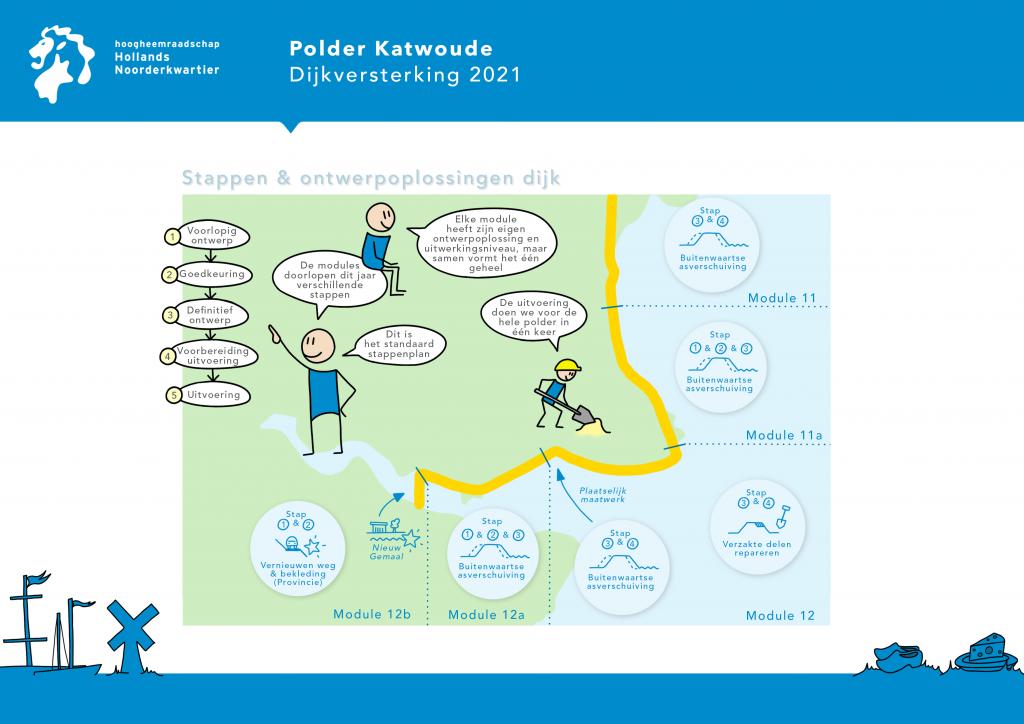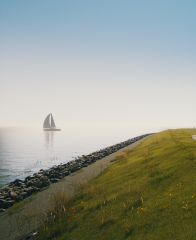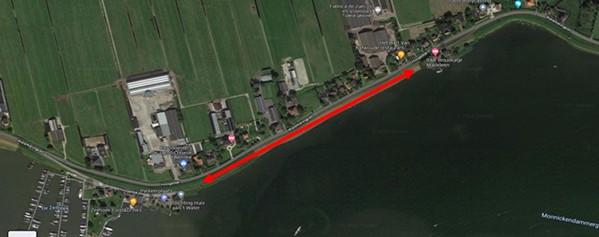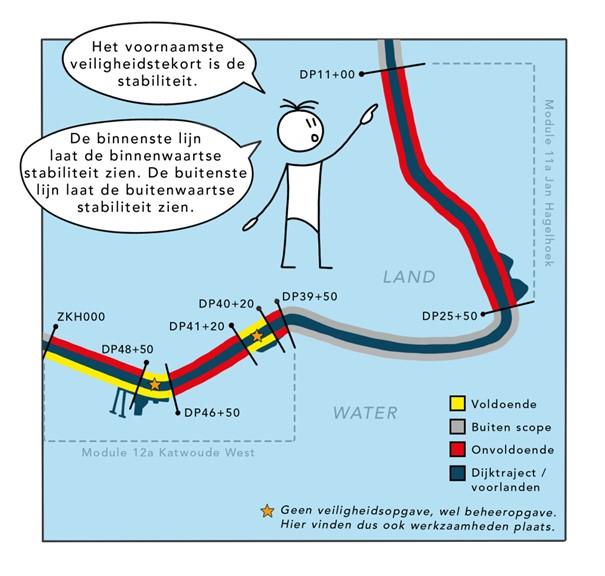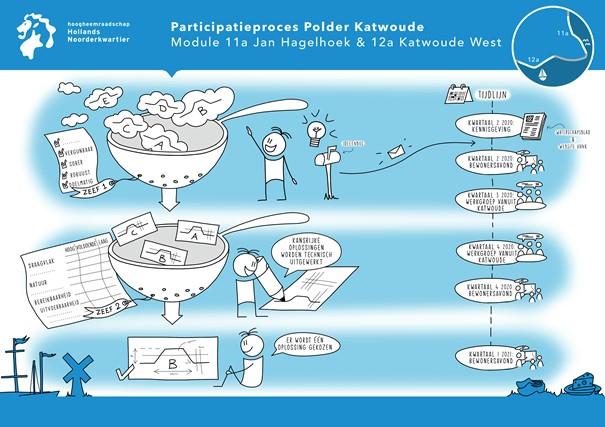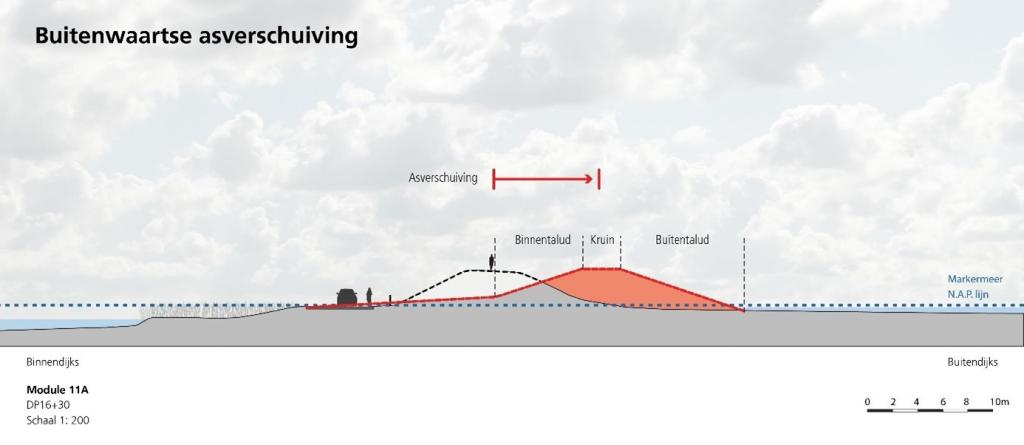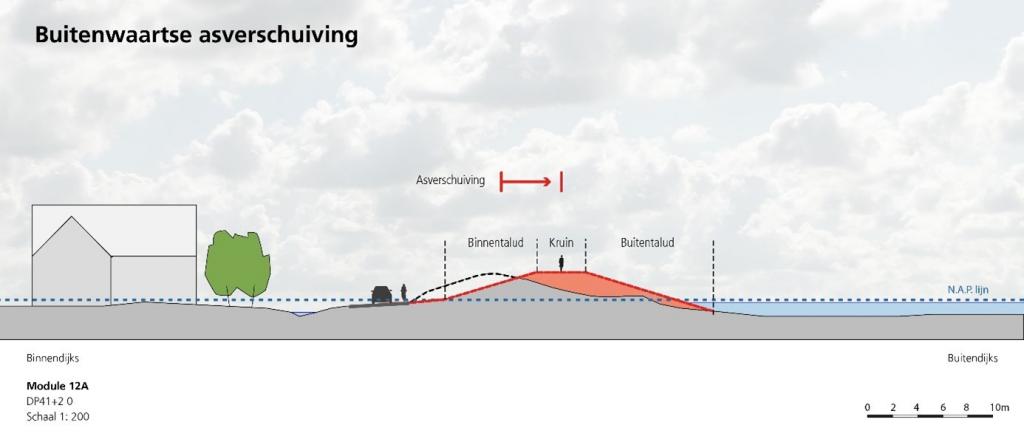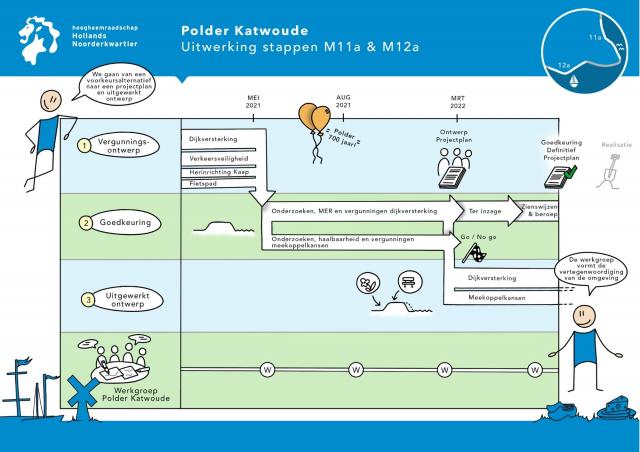Dike reinforcement Katwoude
In 2006, about 33 kilometers of dike between Hoorn and Amsterdam failed. The dike is currently being reinforced by the Alliantie Markermeerdijken (AMMD). Other dike sections along the Markermeer were also rejected in 2011, including two dike sections (modules 11a and 12a) around the Katwoude polder. These dike sections (modules) of project Katwoude are surrounded by two modules of the project dike reinforcement Markermeerdijken.
One polder. One project
In 2017, the board of HHNK made a promise to the municipality of Waterland and the residents of polder Katwoude. We are organizing the various dike reinforcements around this polder in such a way that it feels like one project to the area. One polder, one project! A beautiful promise, but quite a challenge.
The Water Board has energetically set to work to fulfill this promise. And with success! Many different parties involved: Alliantie Markermeerdijken, province of North Holland, municipality of Waterland, the residents of polder Katwoude and HHNK have worked hard. Tuesday, December 6 was the signing of the contract award from HHNK to the Alliance Markermeerdijken. This brings the realization of '1 polder, 1 project' a lot closer.
Contact details for more information
With the assignment of HHNK to AMMD, the environmental management also transfers to AMMD. In recent years, Wineke Straatsma and Joël Verstoep have enjoyed being the contact persons (environmental managers) for modules 11a and 12a of dike reinforcement Katwoude on behalf of HHNK. As of now, Doede Boomsma (AMMD) is taking over. He was already environmental manager for modules 11 and 12 that belonged to AMMD.
For questions about the dike reinforcement, please contact Doede directly at email address: d.boomsma@markermeerdijken.nl or at his mobile number: 06-20 63 48 48. Or check the website: www.markermeerdijken.nl.
Downloads
- Read aloud Presentation information meeting September 27, 2021 with ReadSpeaker docReader
- Read aloud Invitation to information session September 27, 2022 with ReadSpeaker docReader
- Read aloud When am I talking? with ReadSpeaker docReader
- Read aloud Question and answer Hoogedijk with ReadSpeaker docReader
- Read aloud Traffic measures Hoogedijk with ReadSpeaker docReader
- Read aloud Visualization elaboration of steps M11a and M12a with ReadSpeaker docReader
- Read aloud Preparing second working group meeting with ReadSpeaker docReader
- Read aloud Report design workshop September 7, 2020 with ReadSpeaker docReader
- Read aloud Presentation second meeting working group November 9, 2020 with ReadSpeaker docReader
- Read aloud Visualization participation process with ReadSpeaker docReader
- Read aloud Timeline with ReadSpeaker docReader
- Read aloud Inventory field survey (Excavation phase) with ReadSpeaker docReader
- Read aloud Participation plan June 2020 with ReadSpeaker docReader
- Read aloud Security assessment module 11a and 12a 2071 with ReadSpeaker docReader
- Read aloud Draft report ecological survey with ReadSpeaker docReader
- Read aloud Map Gouwzee Buiten-IJ 2019 with ReadSpeaker docReader
